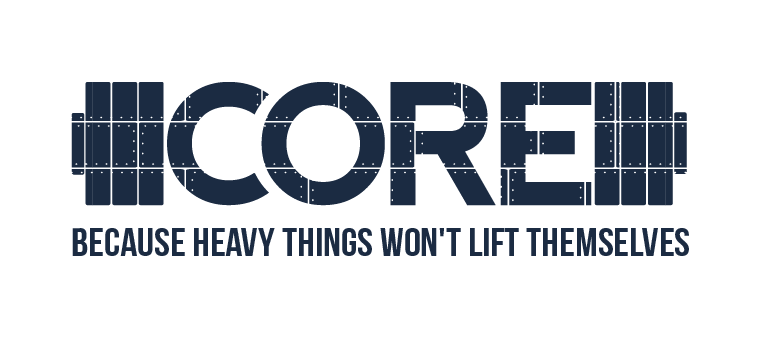“Unexpected entrepreneurial shenanigans.”
Those were the three words I wrote in the blank space describing my reason for having to cancel a Skype call with a marketing group recently.

I happily picked a time to reschedule and no more than an hour later received an email from one of the gentlemen I was supposed to meet up with more or less giving me kudos for coming up with the best “line” for canceling a meeting he had ever heard.[footnote]I was gonna go with “I’m Batman,” but felt it would have been overkill.[/footnote]
I didn’t like cancelling, and I felt like a dick, but I was being honest.
Being an entrepreneur, is, in many cases, organized chaos. Emphasis on the chaos part.

Since leaving Cressey Sports Performance coming up on a year now, and embarking on some opportunities here in Boston, I wanted to share some quick tidbits, lessons learned, advice, and holy-shit-don’t-do-that-again moments I’ve learned as a newly minted “entrepreneur.”
I’m An Entrepreneur, I Guess.
To be clear, I don’t necessarily walk around referring to myself as an entrepreneur. As in: “Oh, hello, my name is Tony Gentilcore, entrepreneur.[footnote]Also, for the record, I hate spelling this word. I never get it on the first try.[/footnote] Maybe if my name was Elon Musk I could pull that off. But until I start sending rockets to Mars I’ll keep my mouth shut.
However, I’d be remiss not to point out that, since 2006 (when I first started writing) I’ve been busy building a “brand” that has become fairly recognizable within fitness/health circles. Despite having not officially become a “gym owner” since this year, in many ways I’ve worn the entrepreneurial hat for about a decade. And, honestly, if you’re in this industry as a personal trainer or coach, and even if you work in a commercial gym setting, all that follows still applies.
On to the pontification.
1) Books Are Cool. But They’re Books, Not Real Life.
I’m a firm believer that if you’re a fitness professional your reading or continuing education should be divided 50/48/2.
50% = Training, program design, assessment, exercise science, nutrition, or anything related to the fitness industry specifically.
48% = Business or personal development
2% = LOLCats
Admittedly, I didn’t hop on the business/personal development train until I met Eric Cressey, but ever since, I’ve been a staunch behavioral economics nerd. I devour books by the likes of Malcolm Gladwell, Dan Ariely, Chip & Dan Heath, Charles Duhigg, and the Freakonomics badasses.
It also helps I’m married to a psychologist. So getting into “lets communicate and talk about our feelings mode” isn’t uncharted territory for me.[footnote]Even though, often, I’d rather throw an ax into my face.[/footnote]
I feel it behooves any fitness professional to take the initiative and divide their reading material.
There’s only so much about squat mechanics you can digest that will have a carry over to your business success. If you have no idea what the term “overhead” means, how the Self-Determination Theory steers a lot of what we do as coaches, whether or not you should apply for an LLC, or have any idea how to create lead generation, you need to expand your horizons outside of Supertraining.
But take all of those business books with a grain of salt.
I’ll note, and this is something Mark Fisher brought up last weekend, most of the books you find on the New York Times Best Seller list are aimed at Fortune 500 companies. The authors write them in the hopes of getting hired by said companies as an consultant. As a result many of the “systems” and protocols they discuss in their books have little weight with a fitness facility of 1-10 employees.
Still read them. Just understand that what’s written on paper won’t always apply to real life if your company isn’t named Apple or GE.
2) Get an Accountant
Waaay back in the day, circa 2007, when we first opened CSP, I learned a hard lesson in money management.
Up until that point I had always been “employed” in the sense that I had taxes taken out of my pay check and then received a W2 at the end of each tax season.
Neither scenario happened back in 2007.
And while I wasn’t an idiot and understood the concept behind paying quarterly self-employment taxes, for lack of a better term, I effed up.
Like, royally.
Needless to say it didn’t take long for me to learn my lesson, and to hire an accountant. I’ve had the same one since 2008 and my man-crush on him grows each year.
He tells me what I can and cannot write off[footnote]Books and DVDs related to fitness industry? Yes. A life-sized poster of Han Solo? Nope.[/footnote], and also tells me where to siphon my money in order to better prepare for unexpected events and to better prepare for retirement.
He’s the man.
So, get an accountant, preferably one who’s familiar with the fitness industry (which mine is). The money you spend on him/her will more than pay for itself.
3) Find YOUR Work-Life Balance
I’m at a cool stage in my career. CORE – my training studio in Boston – is exactly what I need it to be.
Many reading know the story, but as a quick refresher: I left CSP in the fall of 2015. After eight years it was just time to leave. No weirdness or animosity or knife fights ensued. Initially – from Nov 2015 through June 2016 – I was sub-leasing space/time at an already existing studio underneath a woman who owned it.
It was a perfect scenario as I had ZERO interest in owning or running my own gym. I think there’s this weird “thing” in the industry where we’re programmed to think the holy grail is to own a gym, and that you’ve MADE IT once that happens.
That’s a bunch of bullshit. Gym ownership is not for everyone.
I ended up paying an hourly rent and could train however many clients I wished any way I wished (semi-private). Plus, it was only a mile from my apartment. And I could blast techno. #winning
June 2016: Circumstances arose where the person I was sub-leasing under was not going to renew her lease. She asked if I’d want to take it over? My initial reaction:
Long Story Short:
In running the numbers – overhead (rent, liability insurance, utilities), additional equipment cost, miscellaneous stuff like hiring painters, flooring, making of new logo and sign, black lights and disco balls (kidding) – it was going to be cheaper for me to take it over.
That is, assuming I could maintain my current clients (I did), have systems in place to “recruit” new clients (always a work in progress), and have 1-2 trainers sub-leasing under me to help with rent.
Also, I knew I didn’t want to be coaching 25, 30, 40 hours per week. I could change my mind, but I don’t have much interest in growing CORE to CSP levels. As of today all I need is a (badass) space to train my clients 15-20 hours per week, and an open schedule to still pursue my writing endeavors, distance coaching and travel schedule, working on some fitness products, and time to practice my light saber skills.
It was the right fit for me.
It’s different for everyone…but finding YOUR work-life balance is crucial. Not only for long-term success (whatever that means to you), but for sanity, overall level of happiness, and fulfillment too.
[NOTE: I’d head over to Eric Cressey’s site and do a search for “developing revenue streams” if I were you. It’s what will allow you to reduce your coaching volume and build on your total income if that’s something you’re interested in.]
4) Don’t Be Afraid to Ask For Help
This is the part which served as the impetus of this post. I cancelled that initial meeting because, in many ways, I’m a one man show.
I write the programs and coach all my clients, I’m the one who writes all the blog posts (sans the guest posts, but even those take time to format), I’m the one who answers all the emails, interacts on social media, collects payments, schedules, and cleans the facility. And none of this takes into account the clusterfuck of fuckedness that goes into launching your first product (Ahem, Complete Shoulder & Hip Blueprint coming very, very soon), and other things such as podcast appearances, writing responsibilities for other sites, and you know, spending quality time with my wife.
Oh, and I’m expected to be jacked. So, there’s that too.
It’s only been recently I’ve asked for help. You can’t expect to do everything. Well, you can…it’s just the likelihood of you doing everything well – and without driving yourself crazy – is slim.
I hired a “virtual assistant,” Keeley, and she’s been a life-saver.
NOTE: Keeley is a real-live person. I just mostly interact with her via email.
She came recommended to me via another colleague, and the cool thing – and this is something for you, dear reader, to consider – is that I “pay” her with programs and coaching (and fist bumps).
It’s a trade-barter situation. She runs various administrative tasks for me and helps me stay more organized and less likely to light my face on fire, and I write her programs and help guide her towards deadlifting dominance.
Win-win.
5) Consider Your Toilet Paper
This tip from Sol Orwell, entrepreneurial master:
“As an entrepreneur, it is VERY important that you get the small details right. That’s what separates the haves from the have-nots.
As such, here’s a pro-tip on leadership: the toilet paper should roll down from the top, NOT the bottom.
You’re welcome.”
The seemingly trivial stuff matters. Not having a clean facility matters. Not dressing professionally matters. Not taking out the garbage matters. Replacing broken equipment matters. Playing Beyonce radio when your female clients demand it matters. Smiling (even when you’re having a bad day) matters.
BOOM.




